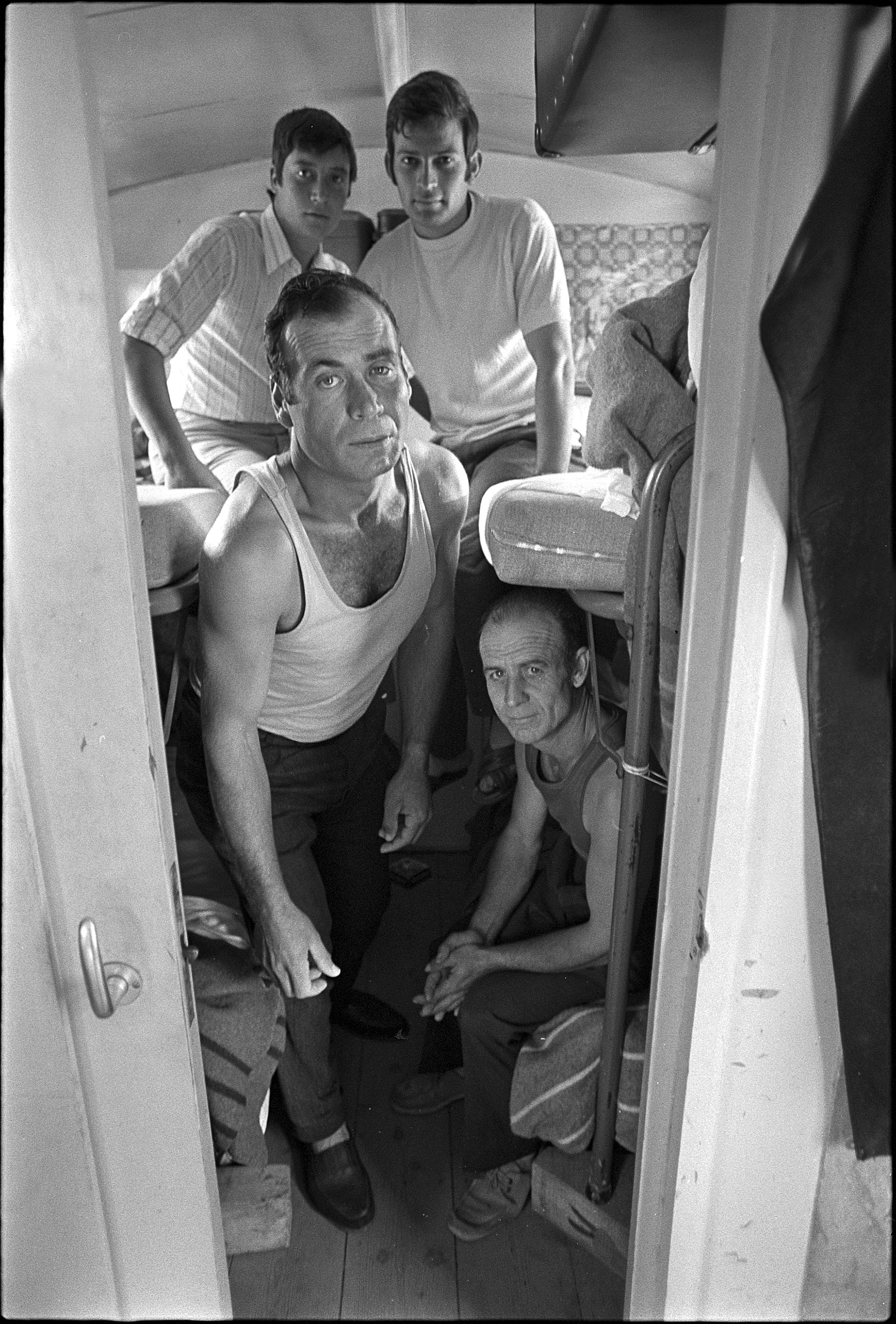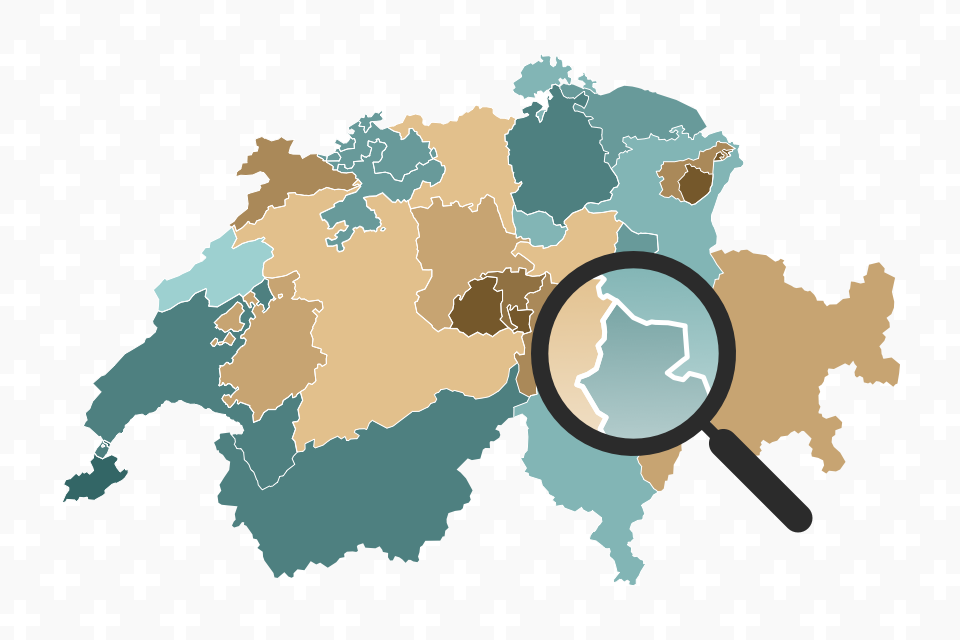Anti-migration initiatives have long tradition

The rightwing move for caps on foreign workers is nothing new in the world of Swiss politics. There has been much debate on the issue over the past 50 years – to harsh criticism and accusations of xenophobia from around the world.
The government attempted to stem the influx by imposing quotas on companies in 1963 and then on a national level in 1970. But these measures had little success.
Between 1950 and 1973, the number of foreign citizens residing in Switzerland rose from 6% to 17%.
It was within this context of a growing intolerance towards foreigners that two small rightwing parties focusing on “defending the national identity” were formed – National Action (now the Swiss Democrats), and the Republican Movement.
Although those parties only played a limited role in national politics, they did manage to get four initiatives about “an excess of foreigners” and “overpopulation” through to a nationwide ballot – all of which received support far beyond the parties’ small electoral base.
The first attempts to limit the number of foreigners dates back to the boom years following the Second World War, when Switzerland underwent the biggest immigration wave in its history.
The rapid expansion of the Swiss economy, especially in the industrial sector, resulted in hundreds of thousands of workers coming in from southern Europe, especially from Italy and Spain.
1968
Withdrawal of the first initiative against “an excess of foreigners”.
1970
People’s initiative against “an excess of foreigners”: 46% yes vote.
1974
People’s initiative against “an excess of foreigners and the overpopulation of Switzerland” : 34.2% yes vote.
1977
“Fourth initiative against an excess of foreigners”: 29.5% yes vote.
1984
People’s initiative “against the selling off of the homeland”: 48.9% yes vote.
1987
A further people’s initiative against “an excess of foreigners” stalls for lack of signatures.
1988
People’s initiative “for a limit on immigration”: 32.7% yes vote.
1996
People’s initiative “against illegal immigration”: 46.3% yes vote.
1997
People’s initiative “for moderation in immigration” stalls for lack of signatures.
2000
People’s initiative “for regulation in immigration”: 36.2% yes vote.
Europe reacts
The first Schwarzenbach initiative – named after the-then National Action leader – aimed to limit the number of foreigners to 10% of the total population. The 1970 ballot obtained 46% of the vote in favour, and had an unusually high voter turnout at 74%. The outcome generated a large reaction to the outcome across Europe.
Encouraged by the result, National Action and the Republican Movement decided to try again with two similar initiatives. But they had less success, with 34.2% of voters in favour in 1974 and 29.5% in 1977.
This was due to increased campaigning by opponents, the main political parties and intellectuals, who had been shocked by the outcome of the 1970 ballot. An even more important factor was the economic recession of 1974-76, which led to more than 300,000 overseas workers leaving Switzerland.
National Action did not have any more luck with its last initiative which was also rejected in 1988 with 32.7% of voters voting yes.
A 2000 ballot on an initiative – launched by a multi-party committee led by the current centre-right Radical Party leader Philipp Müller – to limit the number of foreigners in Switzerland to 18% had a similar outcome, winning 36.2% of the vote.
Criticism from abroad, especially from neighbouring countries, has been strong ever since the first votes in the 1970s – despite the fact that not a single one of those initiatives got through. The media, film and literary world have all depicted the Swiss as a nation of xenophobes.
People’s Party rise
In the past 20 years, the debate on foreigners has been largely fuelled by the rightwing Swiss People’s Party.
It has focused on asylum by calling for the law to be tightened and on European integration by fighting any closer relationship between non-member Switzerland and the European Union.
The result: a meteoric rise in support, with a tripling of the party’s electoral base since the early 1990s.
Nevertheless, until now, the People’s Party has been defeated in all its ballot box attempts to counter the bilateral and free movement of people agreements with the EU.
But it has notched up two important victories in recent years – in votes unsupported by all the other main political parties – with the acceptance of its initiatives “against the building of minarets” in 2009, and “for the expulsion of foreigners who commit crimes” in 2010.
These two successes and the growing influx of EU workers are what prompted the party to launch its first initiative to cap foreign workers’ immigration, the subject of Sunday’s vote.
This latest proposal fits in to the tenor of the party’s policies over the past 20 years. However, during the 1970s, the party had actually criticised initiatives against “an excess of foreigners” as “unacceptable from the human and economic standpoint” and had rejoiced at their clear rejection at the ballot box.
The topic is not going to go away. Swiss citizens will once again be called to vote on limiting immigration, this time with the “stop overpopulation – safeguard our natural resources” initiative, which comes from an environmentalist group.
It seeks to limit annual immigration to 0.2% of the resident population within three years and states that the Swiss government cannot make international agreements which might contradict this.
(Translated from Italian by Isobel Leybold-Johnson)

In compliance with the JTI standards
More: SWI swissinfo.ch certified by the Journalism Trust Initiative









You can find an overview of ongoing debates with our journalists here . Please join us!
If you want to start a conversation about a topic raised in this article or want to report factual errors, email us at english@swissinfo.ch.